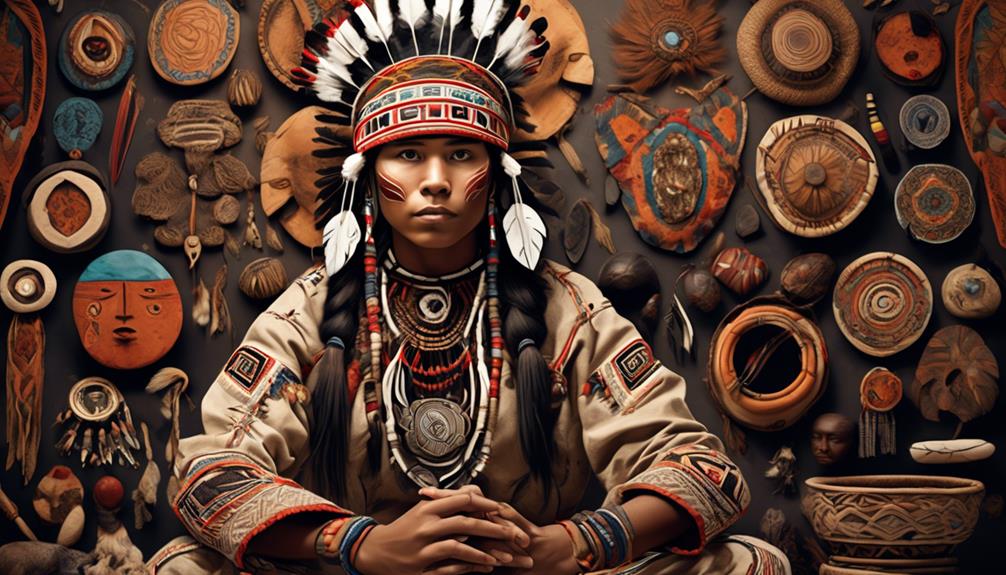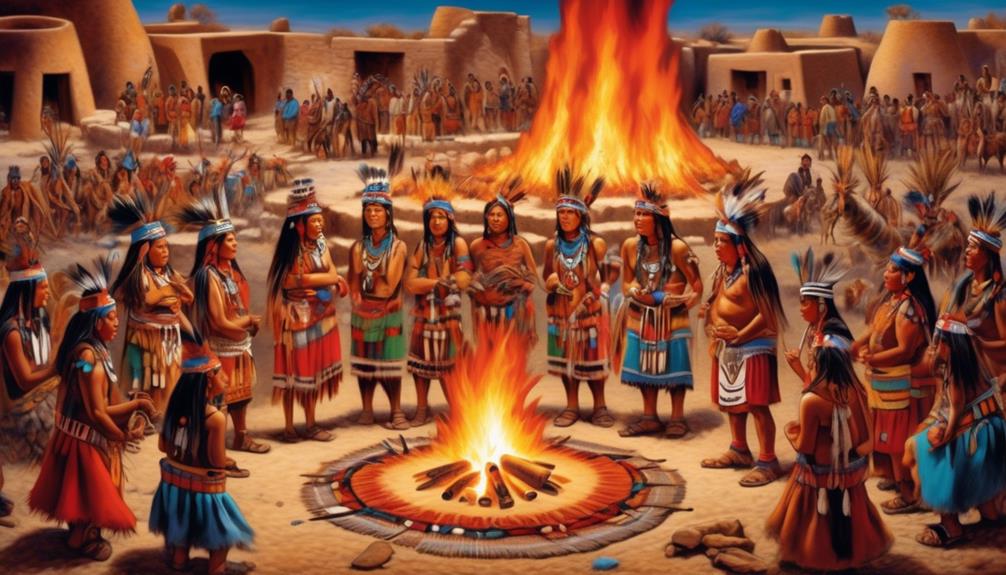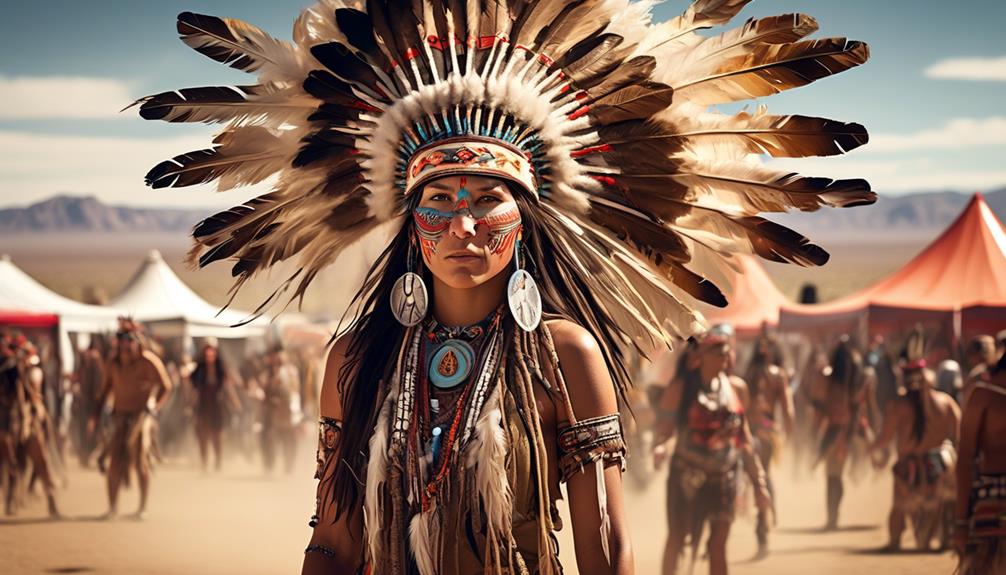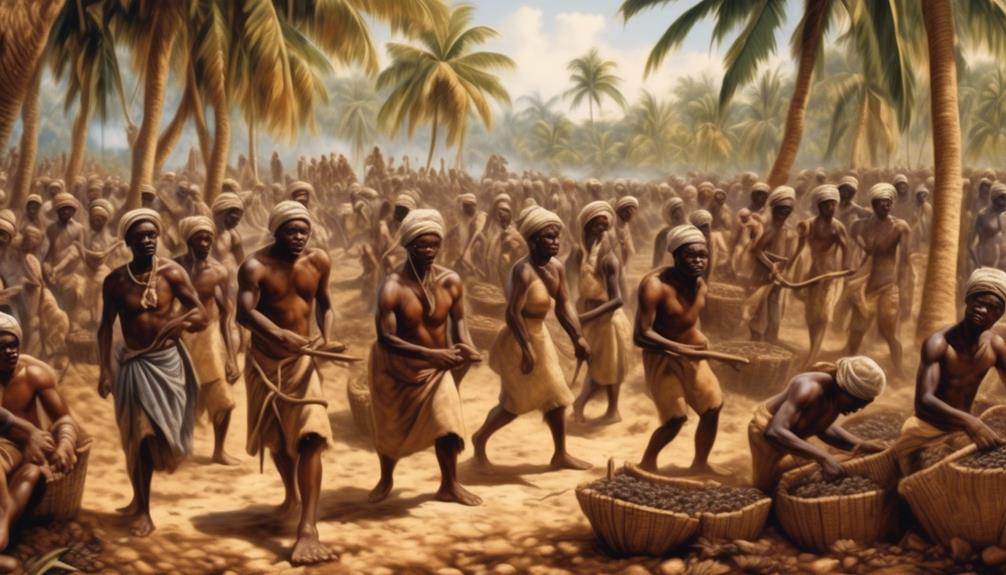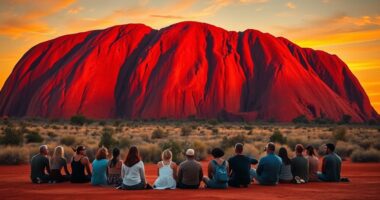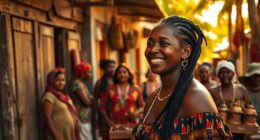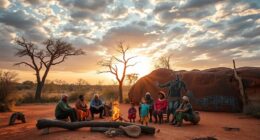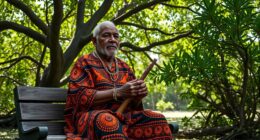Have you ever been curious about your ancestral roots, pondering which Native tribe could be your ancestors? Delving into our Native heritage can be both rewarding and intricate.
As we navigate through the intricate web of genealogy and cultural traditions, we often find ourselves yearning for a connection to a specific tribal community. It's a journey that requires patience, perseverance, and a deep respect for the diverse cultures that make up Indigenous communities.
Join us as we embark on a thoughtful exploration of the avenues available for discovering our Indigenous lineage and embracing the profound significance of ancestral connections.
Key Takeaways
- Tribal enrollment establishes formal recognition and affiliation with a specific tribe, based on criteria such as lineage and residency requirements.
- Genealogy research methods, including historical records and oral traditions, can help trace family history and identify Indigenous tribal affiliations.
- DNA testing can validate oral history and family stories about Indigenous ancestry, potentially identifying specific Indigenous tribes and contributing to the preservation of Indigenous identity.
- Connecting with tribal communities through cultural events, traditional practices, and engaging with tribal members fosters a deeper understanding of cultural traditions and a sense of belonging and identity.
Understanding Indigenous Tribal Identification
Understanding Indigenous tribal identification involves recognizing the complex and diverse methods by which Indigenous communities define and assert their unique cultural and ancestral affiliations. Tribal enrollment is a crucial aspect of Indigenous tribal identification, as it establishes formal recognition and affiliation with a specific tribe. This process often involves meeting specific criteria set by the tribe, such as proving direct lineage to tribal members or meeting residency requirements within the tribal territory.
Additionally, cultural traditions play a significant role in Indigenous tribal identification. These traditions encompass a wide range of practices, including language, ceremonies, art, and storytelling, all of which contribute to the preservation and continuation of tribal identity. Moreover, cultural traditions are often integral to tribal enrollment processes, as they serve as a means of demonstrating a genuine connection to the tribe's customs and heritage.
Understanding the interplay between tribal enrollment and cultural traditions is essential for comprehending the nuanced and multifaceted nature of Indigenous tribal identification.
Exploring Genealogy Research Methods

Exploring genealogy research methods involves investigating ancestral lineages and connections, building upon the foundations of Indigenous tribal identification and the diverse methods used by communities to assert their cultural and ancestral affiliations.
Historical records play a crucial role in genealogy research. These records can include census data, birth and death certificates, marriage licenses, and immigration records. These documents provide valuable information about our ancestors, helping us trace our lineage back through the generations.
In addition to historical records, oral traditions are a vital source of information in genealogy research, especially within Indigenous communities. Elders and community members pass down stories, customs, and genealogies through oral traditions, providing insights into family lineages and connections. These oral histories are invaluable in understanding the cultural and ancestral affiliations of Indigenous tribes.
Through a combination of historical records and oral traditions, genealogy research methods allow individuals to piece together their family history, identify their Indigenous tribal affiliations, and gain a deeper understanding of their cultural heritage. These methods provide a framework for individuals to connect with their roots and honor their ancestral lineage.
Uncovering Indigenous Ancestry Through DNA Testing
Utilizing DNA testing to trace Indigenous ancestry provides a scientific method for individuals to uncover their tribal affiliations and better understand their heritage. DNA testing can reveal valuable insights into one's ancestral heritage, offering a deeper connection to Indigenous roots.
Here are three key benefits of using DNA testing to uncover Indigenous ancestry:
- Validation of Oral History: DNA testing can validate oral history and family stories about Indigenous ancestry, providing a tangible link to ancestral heritage. This validation can be profoundly meaningful, affirming the lived experiences and traditions passed down through generations.
- Identification of Specific Indigenous Tribes: Through DNA testing, individuals can potentially identify specific Indigenous tribes from which they're descended. This knowledge not only fosters a sense of belonging but also enables individuals to engage with their tribal communities and traditions more authentically.
- Preservation of Indigenous Identity: DNA testing contributes to the preservation of Indigenous identity by reconnecting individuals with their tribal affiliations and strengthening their cultural heritage. This preservation is crucial for maintaining Indigenous traditions and promoting cultural diversity.
DNA testing offers a powerful tool for individuals seeking to embrace and honor their Indigenous ancestry, fostering a deeper understanding of their roots and cultural identity.
Connecting With Tribal Communities
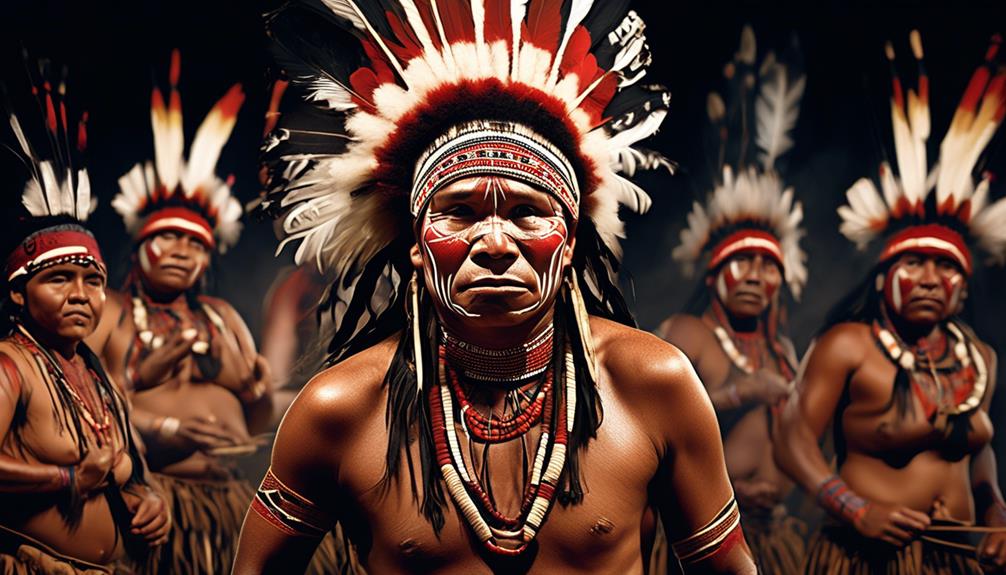
Connecting with tribal communities provides a vital opportunity for individuals to engage directly with their Indigenous heritage, fostering a deeper understanding of cultural traditions and creating meaningful connections within the community. Participating in cultural events is a significant way to immerse oneself in the rich tapestry of Indigenous traditions. Attending powwows, storytelling sessions, or traditional ceremonies allows for firsthand experiences of the vibrant cultural practices that have been passed down through generations. These events also offer a chance to interact with tribal members, gaining insight into their way of life and values.
Learning traditional practices is another valuable aspect of connecting with tribal communities. Many tribes offer workshops or classes that teach traditional skills such as beadwork, pottery, basket weaving, or traditional dance. Engaging in these activities not only provides an opportunity to learn new skills but also fosters a deeper connection to the cultural heritage of the tribe. These interactions can also serve as a form of cultural exchange, where individuals can respectfully learn from and contribute to the preservation of Indigenous traditions.
Embracing Your Indigenous Heritage
Embracing our Indigenous heritage involves actively participating in cultural events and learning traditional practices. This allows for a deeper understanding of our cultural traditions and fosters meaningful connections within the community. Embracing culture and heritage pride can have a profound impact on our lives, providing a sense of belonging, identity, and purpose.
Here are three ways to embrace your Indigenous heritage:
- Engage in Cultural Events: Attending powwows, traditional ceremonies, and cultural workshops can provide invaluable insights into the customs, beliefs, and values of your Indigenous heritage. It creates an opportunity to connect with elders and community members, fostering a deeper appreciation for your cultural roots.
- Learn Traditional Practices: Embracing your Indigenous heritage involves learning traditional skills such as beadwork, basket weaving, or traditional dance. These practices not only preserve cultural heritage but also serve as a way to reconnect with your ancestors and the wisdom they imparted.
- Educate Others: Sharing your knowledge and experiences with others not only helps in preserving Indigenous traditions but also fosters understanding and appreciation among different communities, promoting a sense of unity and cultural exchange.
Frequently Asked Questions
How Can I Respectfully Engage With Indigenous Cultural Traditions and Practices?
We can respectfully engage with indigenous cultural traditions and practices by first acknowledging and honoring their significance.
This involves learning about the specific customs and beliefs of the indigenous community in question. It's important to approach cultural engagement with humility, cultural sensitivity, and a willingness to listen and learn.
Respecting traditions and understanding the historical and contemporary significance of indigenous heritage are essential for meaningful and respectful interactions.
Are There Any Specific Resources Available for Learning About the History and Culture of My Specific Indigenous Tribe?
Absolutely, there are resources available for learning about tribal connections and genealogy research. Many tribes have cultural centers, websites, and archives that provide historical and cultural information.
Additionally, there are organizations dedicated to indigenous language revitalization efforts, offering workshops, classes, and materials for learning specific languages.
Engaging in genealogy research and exploring these resources can provide valuable insights into the history and culture of your specific indigenous tribe.
What Are Some Common Misconceptions About Indigenous Identity and How Can I Address Them?
Addressing stereotypes about indigenous identity is crucial. Many misconceptions stem from cultural appropriation, which undermines our heritage.
By educating others about our diverse cultures and histories, we can challenge these stereotypes. It's essential to promote accurate, respectful representation and highlight the complexities of indigenous identity.
As the saying goes, 'Walk a mile in someone else's moccasins.' Understanding and empathy can help combat these misconceptions and promote unity.
How Can I Support Indigenous Communities and Advocate for Their Rights?
Supporting initiatives for indigenous communities involves actively engaging in cultural sensitivity, historical education, and advocating for their rights.
This can include participating in local events, amplifying indigenous voices, and donating to indigenous-led organizations.
It's crucial to educate oneself on the historical and ongoing injustices faced by indigenous peoples and to use that knowledge to advocate for systemic change.
Building meaningful relationships with indigenous communities is also essential in effectively supporting their initiatives.
What Are Some Important Considerations to Keep in Mind When Discussing My Indigenous Heritage With Others?
Navigating conversations about our indigenous heritage requires cultural sensitivity and respect. It's crucial to approach these discussions with an open mind and willingness to learn.
We should consider the diverse experiences and traditions within indigenous communities and recognize that there's no one-size-fits-all approach.
Acknowledging the historical context and ongoing challenges faced by indigenous peoples is essential.
Conclusion
After exploring genealogy and DNA testing, we've uncovered our indigenous ancestry and connected with tribal communities.
As the saying goes, 'knowing where you come from is the key to understanding who you are.'
Embracing our indigenous heritage has enriched our sense of identity and belonging.
We encourage others on a similar journey to seek out their roots and celebrate the rich cultural heritage of indigenous tribes.
Mary is a passionate writer who brings creativity and a fresh perspective to our team. Her words have the power to captivate and inspire, making her an essential contributor to our content. Mary’s commitment to storytelling and dedication to promoting Indigenous culture ensures that her work touches the hearts of our readers. We’re fortunate to have her as part of our team.
